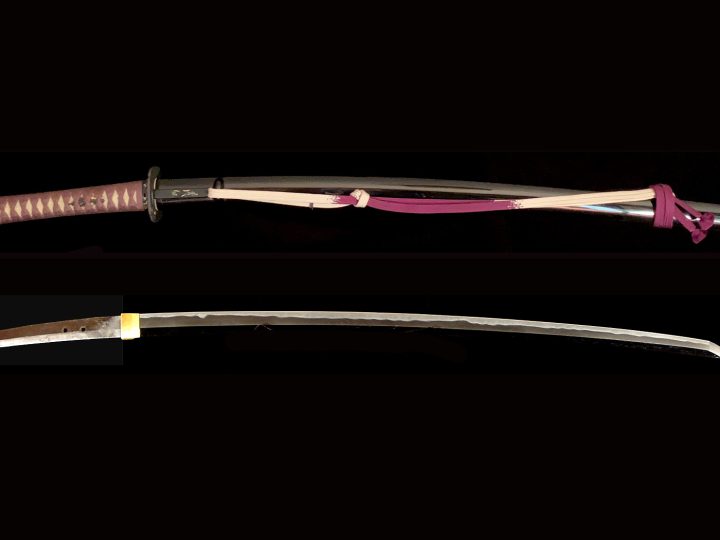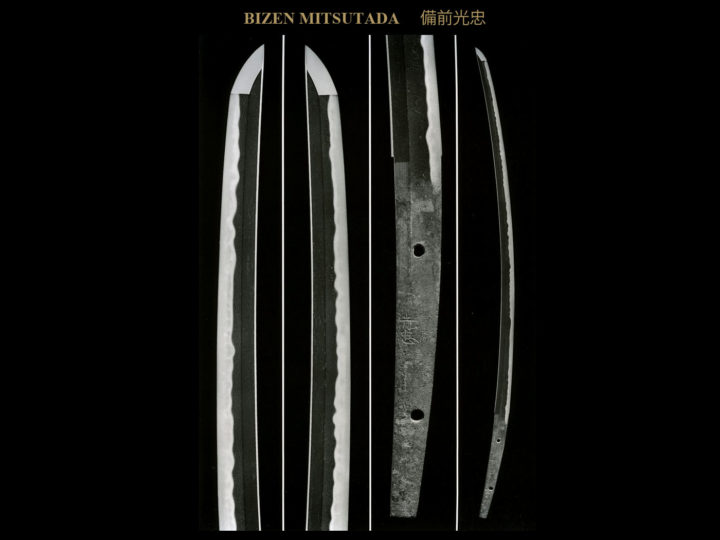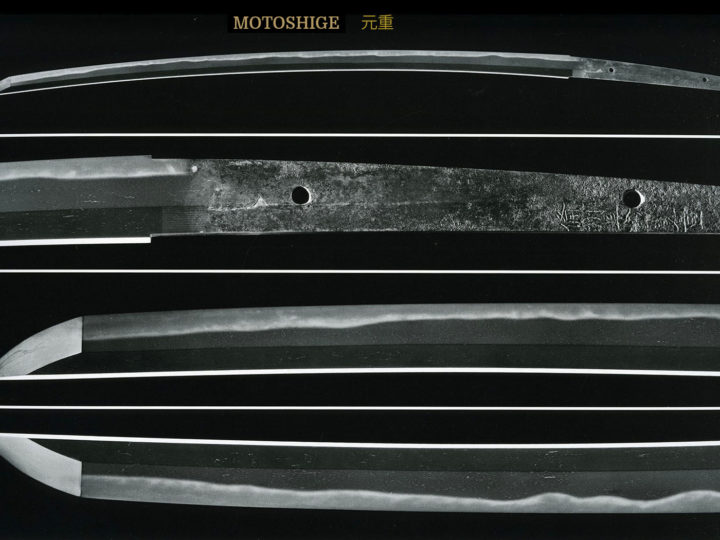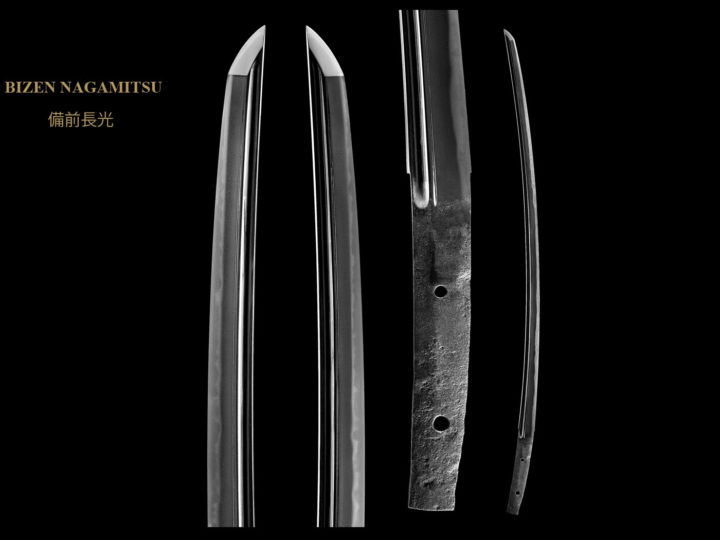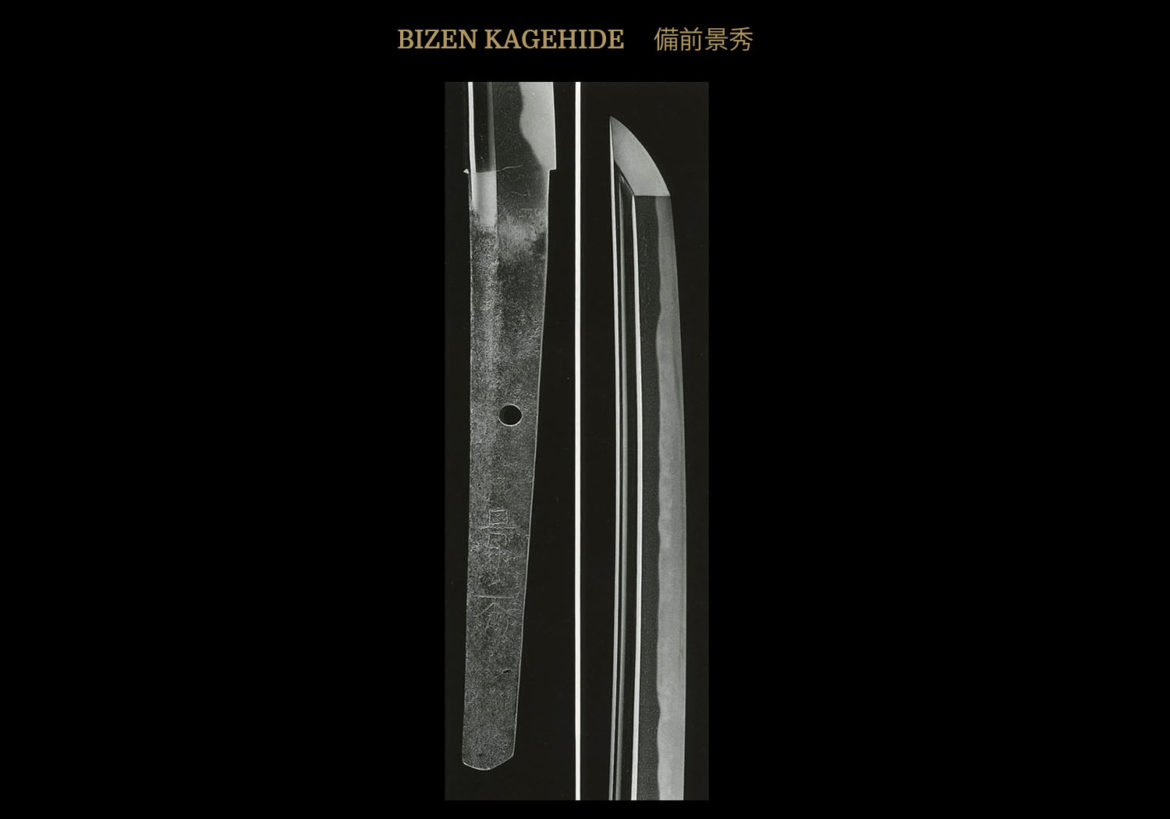
Bizen Kagehide (備前景秀) worked around the Bunei period (1265). He was said to be the younger brother of Bizen Mitsutada (備前光忠) who founded the Osafune (長船) line of smiths of the Bizen tradition. There are very few signed works of Kagehide (景秀) remaining. His most famous blade is known as Kuronbo-giri that was a treasure of the famous Date Masamune of Sendai.
There is some speculation that because the shape and structure of the blades of Kagehide (景秀) are closer to the Ko-Bizen (古備前) tradition than that of the remaining works of Mitsutada (光忠), that he should be classified as a Ko-Bizen (古備前) smith rather than a member of the Osafune School. While this is a valid argument, because of the lack of a great amount of signed blades by Kagehide (景秀), we must remember that he worked in a time of transition. If, in fact, he was the younger brother of Mitsutada (光忠), it stands to reason that they were contemporary and that when Mitsutada (光忠) broke from his more traditional Ichimonji style so it follows that the works of Kagehide (景秀) might retain many of the characteristics of the older Ko-Bizen (古備前) school.
Some of the general characteristics of blades by Bizen Kagehide (備前景秀 ) are as follows:
SUGATA: The sugata of Kagehide (景秀) is typical of swords made in the Middle Kamakura Era. There was deep sori and funbari (narrowing between the width at the hamachi and the width at the kissaki). His blades tended to be slimmer than his older brother, Mitsutada (光忠).
JITETSU: The grain of the steel is a fine itame with an occasional trace of masame. There will be midare-utsuri present.
HAMON: Most of his blades will have hamon comprised of ko-choji midare and ko-gunome. One of the important features of his hamon and one that separates his works from that of Mitsutada (光忠) is the presence of togareba. Ashi and yo will also be found. Ko-nie will be present.
BÔSHI: The bôshi of Kagehide (景秀) tend to be small. Some will have an ikubi kissaki shape and others more of a ko–bôshi, which is closer to Ko-Bizen (古備前) blades.
NAKAGO: On the few existing ubu blades by Kagehide (景秀), the nakago has a ha-agari-kirijiri tip. Both the mune and the ha sides of the nakago are slightly rounded.
MEI: The few existing signed blades by Kagehide (景秀) are all signed with ni-ji mei (two character signatures). The writing is large and somewhat unrefined characters.


